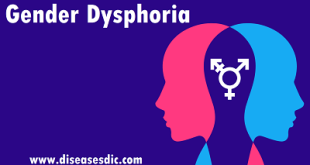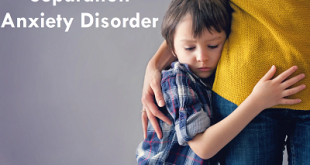Definition
Claustrophobia is an anxiety disorder that causes an intense fear of enclosed spaces. It can be rational to fear being trapped when there is a genuine threat. However, in claustrophobia, people experience fear even when there is no obvious or realistic danger in a particular situation. People who experience claustrophobia generally go out of their way to avoid confined spaces, including lifts, tunnels, tube trains, revolving doors, public toilets, and MRI scanners. Some people even don’t like to wear crash helmets. Unfortunately, avoidance may reinforce the fear.
Claustrophobia may arise from a one-off trauma at any age, developed when the person was a child (for example growing up with one or more claustrophobic parents) or emerge as someone gets older. Around 10% of the population may experience claustrophobia during their lifetime.
Epidemiology
Claustrophobia has a lifetime and 12-month prevalence of 7.7% to 12.5%. There is a higher prevalence of specific phobias in women. Studies conclude that there is a 1 in 10 prevalence of anxiety disorder among people before age 16.
Types of Claustrophobia
Feeling claustrophobic’ is defined as a fear of confinement, immobility, or suffocation. When people suffering from this phobia are confined to a closed space, they feel anxious and have a sense of suffocation, because they assume there is an insufficient supply of air.
Small Space Anxiety
Entrapment is a common occurrence in confined spaces. Some people are afraid of all small spaces, while others are afraid of only one type. People who suffer from claustrophobia are afraid of small spaces, such as:
- Small, crowded rooms
- Basements or closets
- Tunnels or subways
- Elevators or claustrophobic stairwells
- Cars, especially when there is a lot of traffic
Trains or planes
Fear of Being Restricted in Your Movements
Even when there is a substantial amount of room available, people with claustrophobia are generally scared of situations that restrict their mobility. People may be apprehensive about being confined in a barber’s chair or a dentist’s chair while having their hair cut or their teeth cleaned. They may be scared of amusement park rides such as roller coasters, or they may be anxious about crowded amusement parks where they may not be able to flee fast. If a person is afraid of being confined in their movements, he or she may refuse to wear a cast to treat a broken bone.
Suffocation fear
Suffocation is a fear shared by many people who are scared of being confined to small rooms. Such individuals may assume there is insufficient oxygen in this closed space and fear that they may devour it all, preventing them from breathing. Individuals who are afraid of suffocating may remove pieces of clothes during a panic attack because it gives them the impression of being able to breathe easier.
Causes of Claustrophobia
Scientists are unsure of the exact causes of claustrophobia, which likely differ from person to person. There are, however, a few theories on the causes of specific phobias, and claustrophobia in particular.
Childhood Trauma
Mental health professionals believe that environmental factors, such as childhood trauma, can contribute to the development of claustrophobia. This could include experiences like being trapped in a confined space, bullying, or abuse.
Near Space Perception
Claustrophobia may also be caused by perceptual differences in near space, which you might think of as your “personal space” or “personal bubble.” A 2011 study found that people with larger near spaces reported higher rates of claustrophobia. This is likely related to the defensive function of near space.
Genetics
There also may be a genetic cause behind claustrophobia. A 2013 study found that a mutation of the GPM6A gene is more frequent in individuals with claustrophobia.
Possible genetic or physical factors
Other theories that may explain claustrophobia include:
Having a smaller amygdala: This is the part of the brain that controls how the body processes fearTrusted Source.
Genetic factors: A dormant evolutionary survival mechanism causes reactions that are no longer needed in today’s world.
Mouse studies have indicatedTrusted Source that a single gene may cause some individuals to have a greater degree of “resident-intruder stress.”
One group of researchers has suggested that people who experience claustrophobia perceive things as being nearer than they are, and that this triggers a defense mechanism.
Claustrophobia symptoms
The main sign of claustrophobia is a relationship between symptoms of anxiety and confined or crowded spaces. You may feel as if you are trapped with no way out and no control over the situation. In addition to affecting the way you think and feel emotionally, fear may produce certain physiological effects. These include:
- Nausea
- Sweating
- Rapid heartbeat
- Fast or labored breathing
- Fainting
- Dizziness
- Tense muscles
Certain habits may also indicate claustrophobia. Your doctor may ask you whether you do any of the following:
- Look for exits when entering a room
- Stay near exit doors in crowded places
- Feel nervous if doors are shut
- Avoid airplanes, subways, elevators, or cars in heavy traffic
Complications of Claustrophobia
Claustrophobia causes complications if it is not treated. Below is the list of complications and problems that may arise if Claustrophobia is left untreated:
- Mood disorders
- Suicidal thoughts
Diagnosis and test
- A mental health expert can diagnose phobia; keep a regular track of your child’s behaviour/health in particular situations and with objects.
- Phobia diagnosis is based on diagnostic guidelines and a thorough clinical interview. If you feel that your child has a phobia, take him/her to a healthcare expert. Your child’s doctor will either ask you or your child about the symptoms. The doctor might also take a medical, psychiatric, and family history.
- Your child’s doctor might also use the diagnostic criteria in the Diagnostic and Statistical Manual of Mental Disorders (DSM-5).
Treatment and medications
Claustrophobia is a treatable condition, with many effective options available. Treatment is effective in 90% of cases it is a curable condition. Psychotherapy is one of the best treatment options for claustrophobia and there are multiple forms of therapy that are effective in treating this phobia.
Types of therapy to treat claustrophobia
Cognitive behavioral therapy (CBT) – CBT is a tried and true method of treating anxiety disorders. A CBT therapist works with their client one-on-one to change negative thought patterns and the behaviors associated with these thoughts. For claustrophobia, this looks like sessions where you work through the fear associated with confined spaces and look for ways to overcome it.
Exposure therapy- This is another effective method for treating claustrophobia. This type of therapy slowly exposes the client to their fear so that over time they feel less overwhelmed and controlled by it. Through repeated exposure to the phobia, you can become desensitized to the intense fear previously associated with the situation.
Visualization techniques- These techniques are also important for treating claustrophobia. In this method, the sufferer uses mental imagery to learn how to combat their fears. Visualizing a safe space while experiencing a panic attack can be a helpful technique. While in therapy, practicing visualization in order to cope with fear in the moment has been shown to be effective.
Exposure therapy can be very effective to treat claustrophobia as it helps challenge those fears. It helps the individual realize that they can actually beat their negative thoughts and cope effectively with the anxiety that comes up from exposing themselves to what they are afraid of.
Prevention
There are no specific methods to prevent claustrophobia. People with claustrophobia need to cope with panic attacks, which they experience in an uncomfortable situation. The panic attack usually lasts for half an hour. Therefore, one should not panic and if driving they should park the car immediately.
One should not allow negative thoughts to enter their mind such as I’m going to die and also should not feel that they are in danger. Instead, they have to relax and take a look at the surroundings. One must browse through the decor, look at items and talk to other people.
Support from family and friends is crucial for people suffering from claustrophobia. A person getting treated to overcome a phobia may find it challenging and will need the support and care from people. Psychotherapists may ask the family members or friends to attend certain sessions to support the person seeking treatment.
 Diseases Treatments Dictionary This is complete solution to read all diseases treatments Which covers Prevention, Causes, Symptoms, Medical Terms, Drugs, Prescription, Natural Remedies with cures and Treatments. Most of the common diseases were listed in names, split with categories.
Diseases Treatments Dictionary This is complete solution to read all diseases treatments Which covers Prevention, Causes, Symptoms, Medical Terms, Drugs, Prescription, Natural Remedies with cures and Treatments. Most of the common diseases were listed in names, split with categories.







